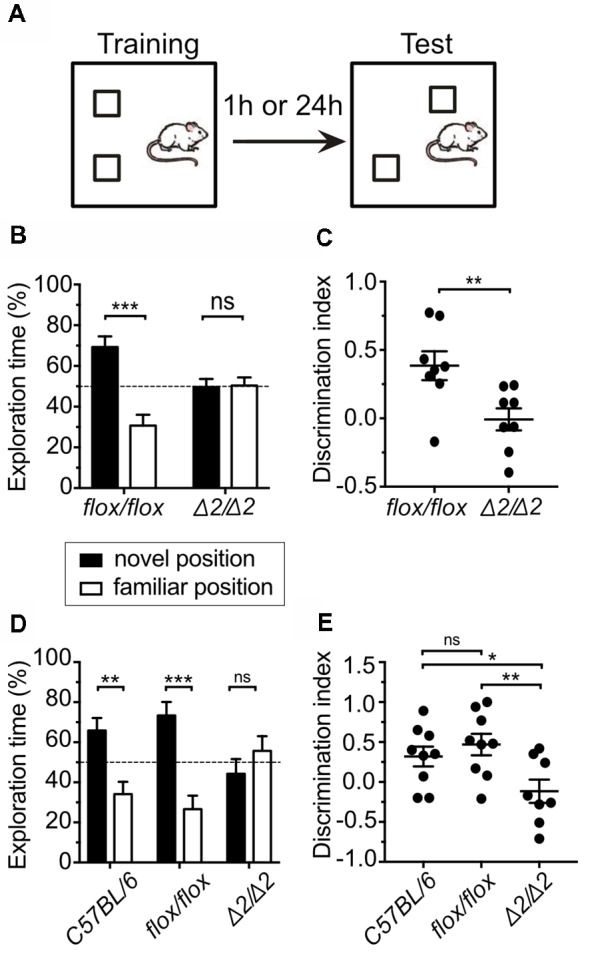Figure 3.

Chd1Δ2/Δ2 mice show deficits in short and long-term spatial memory. (A) Experimental setup for the Object Location Memory (OLM) test. Mice were tested either for short-term (1 h) or long-term spatial memory (24 h). (B) Exploration time of both objects during the test session for short-term memory was measured and is expressed in % of total exploration time. The dashed line indicates the chance level (50%). Two-way ANOVA revealed a significant genotype × position interaction effect (F(1,28) = 17.578, p < 0.001). Duncan’s post hoc test revealed that while Chd1flox/flox mice preferred the object at the novel position instead of the familiar position (p < 0.001), Chd1Δ2/Δ2 animals displayed similar preference for both the positions (p > 0.05). (C) The discrimination index for the object in the novel location was calculated (see “Materials and Methods” section) and plotted for each animal. Statistical significance was calculated by unpaired t-test. (D) In the long-term memory test (24 h), a significant genotype × position interaction effect (F(2,46) = 9.7144, p < 0.001) was observed. Post hoc test revealed that while both C57BL/6N and Chd1flox/flox preferred the object at the novel position instead of the familiar position (p < 0.01 and p < 0.001 respectively), Chd1Δ2/Δ2 displayed similar preference for both positions (p > 0.05). C57BL/6N mice were used as an additional control group. (E) Same as in (C) for long-term memory (24 h) testing. C57BL/6N mice were used as an additional control group. Significance threshold was set to p < 0.05 (*p < 0.05, **p < 0.01, ***p < 0.001, ns, non-significant). For (B,C) n = 8 for both groups. For (D,E) n = 9 (C57BL/6N), n = 9 (Chd1flox/flox) and 8 (Chd1Δ2/Δ2), respectively. Means ± SEM are shown.
